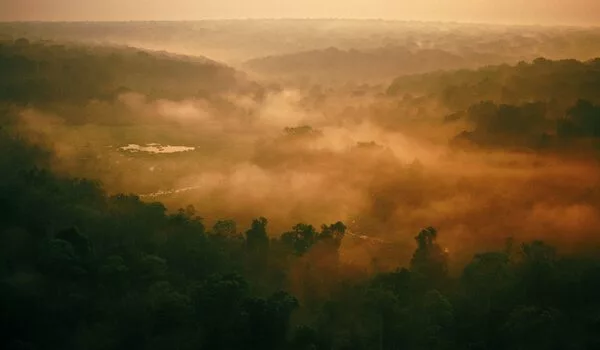Efforts to conserve the carbon stored in tropical forests would be boosted if they were linked to the iconic, endangered primates that live there, according to Oregon State University ecologists in research published in the Proceedings of the National Academy of Sciences.
“Climate change and the biodiversity issue are two of the world’s most serious threats,” said William Ripple of the Oregon State University College of Forestry. “And it’s becoming evident that large-scale climate action would be impossible if we approach climate change as a separate issue.”
Ripple and co-author Christopher Wolf, also of the College of Forestry, analyzed 340 threatened forest primate species in terms of how much carbon their ranges are warehousing. Threatened species are those classified by the International Union for Conservation of Nature as vulnerable, endangered or critically endangered.
The researchers point out that the world’s forests contain 861 gigatonnes of carbon, which is equivalent to nearly 87 years of fossil fuel emissions if they continue at their current rate. Among those carbon reserves are about 140 gigatonnes of “irrecoverable” carbon. Based on current recovery rates, this irreversible carbon would most likely not be recovered by 2050, the deadline many scientists have set for the Earth to achieve net-zero emissions in order to prevent the most severe effects of climate change.
Climate change and the biodiversity issue are two of the world’s most serious threats. And it’s becoming evident that large-scale climate action would be impossible if we approach climate change as a separate issue.
William Ripple
Most of the Earth’s irrecoverable carbon is stored in rainforests (both tropical and temperate), mangrove swamps and peatlands. Threats to its storage include fire, development and conversion to agriculture.
“Among the lands with the highest levels of irrecoverable carbon, there are 635,000 square kilometers that also hold the highest levels of forest primate species richness,” Wolf said.
That combined area, not quite the size of Texas, contains 15.5 gigatonnes of irrecoverable carbon, an amount equivalent to more than 40% of the world’s current annual fossil fuel emissions.
“Conserving irrecoverable carbon is obviously an important objective and policies aimed at achieving it might be more appealing and effective if they were framed in the context of multiple benefits,” he added.

Wolf and Ripple list four reasons that coupling carbon with primates would be a valuable framework:
- As people’s closest animal relatives, non-human primates are generally well loved and viewed as charismatic.
- Sixty-seven percent of forest primate species are threatened with extinction, with tropical deforestation being a major risk factor.
- Some primates can benefit forest regeneration.
- Because of their habitat requirements, many primate species’ ranges overlap with areas in the tropics where irrecoverable carbon is stored.
Wolf and Ripple believe that focusing on individual flagship species rather than primates as a “monolithic group” would be the most effective method, citing the common woolly monkey, eastern gorilla, and Bornean orangutan as examples.
“The common woolly monkey dwells in the upper Amazon basin and has significant irrecoverable carbon stocks throughout its habitat,” Ripple explained. “It’s a vital seed disperser in forests, aiding regeneration and future carbon sequestration.”
According to the researchers, 225 of the 340 vulnerable forest primate species are either endangered or severely endangered, and all but five are displaying diminishing population trends.
Many of the species dwell in “hotspots” in South America, Africa, and Asia, which have a lot of irrecoverable carbon and a lot of primate species richness, but despite their conservation and climate mitigation significance, the hotspots are mainly unprotected.
“Policy implementation specifics will determine the effectiveness of linking irreversible carbon and forest primates,” Ripple stated. “Some primate species, for example, may be particularly charismatic and have ranges that are strongly associated with irreversible forest carbon. This opens the door to sustainable ecotourism, which might provide revenue for both primate conservation and carbon sequestration.”
Any policies established with co-benefits in mind, he says, must take into account local conditions and promote Indigenous populations as well as overall human well-being and sustainability. “Ultimately, this is a worldwide problem since outside demand for resources like as wood products, cattle feed, and palm oil is a significant driver of tropical deforestation,” Ripple added.
“What we’re advocating will necessitate substantial coordination,” Wolf continued. “And primates are only one taxonomic order, with a high concentration in the tropics. This means that efforts must be made to examine the overlap between irreversible carbon and species in other taxonomic groupings, particularly in temperate climates. However, the primate-carbon link is a vital first step.”





